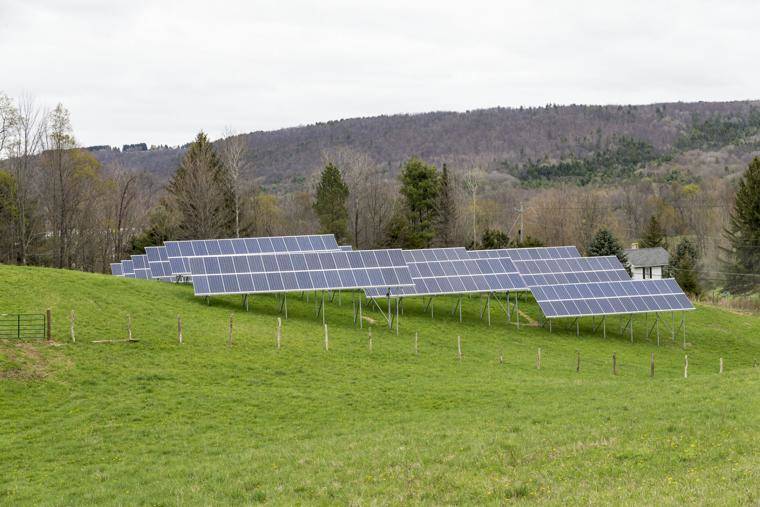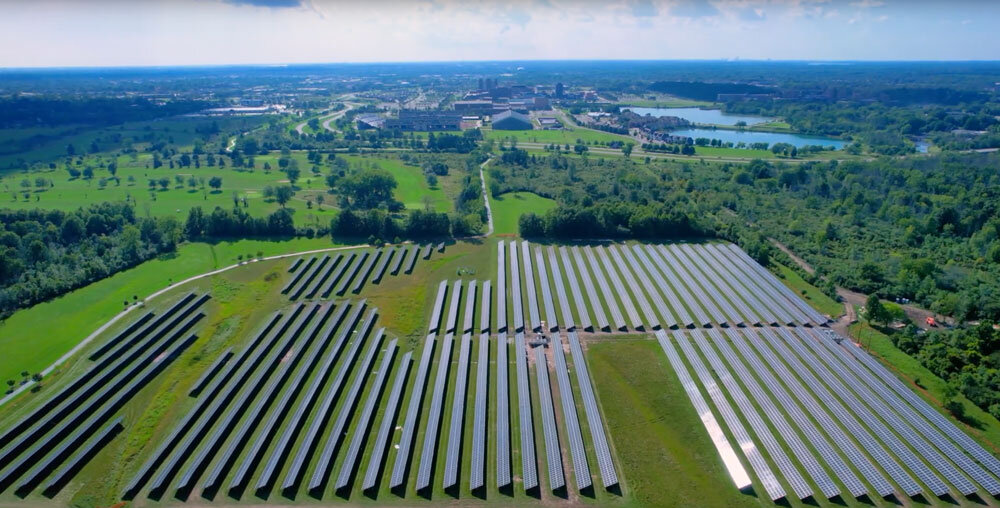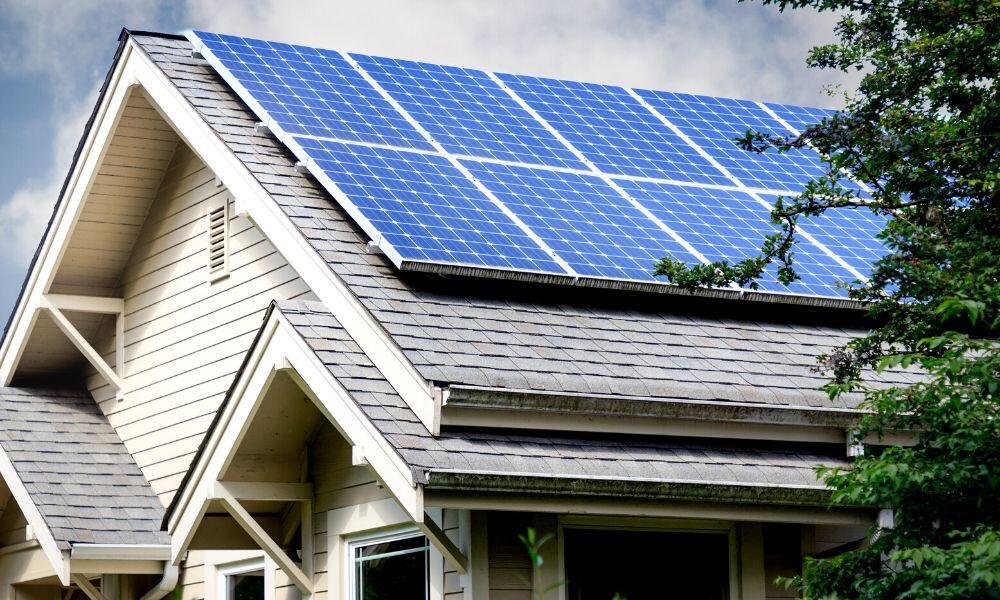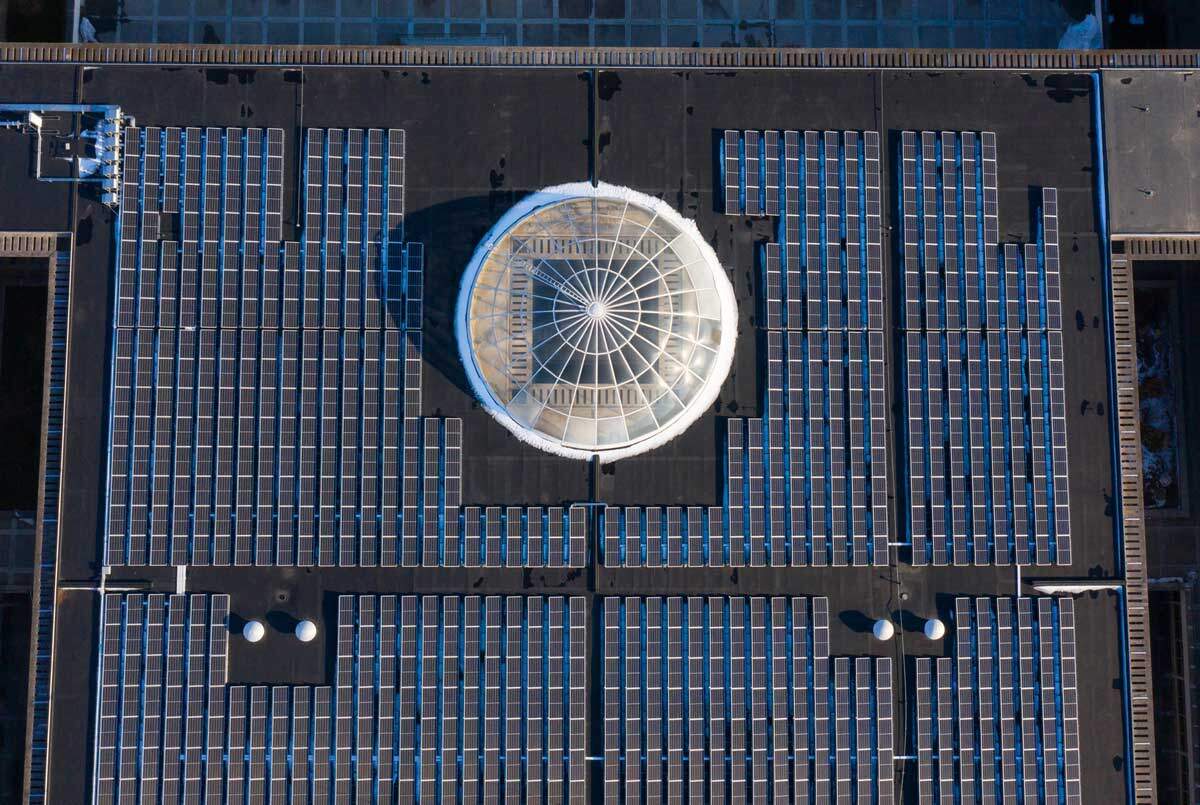All Part of a Larger Plan- Alternative Energy Options for Businesses
By Glynis Hart – ithaca.com
(Photo: Diane Duthie)
By 2030, according to the State of New York’s REV energy plan, 50 percent of the state’s power will come from renewable energy resources. As of 2015, 26 percent already does, largely hydroelectric power generated by dams in upstate, but to make it that last 24 percent- and, one would hope, beyond- the NY Public Service Commission and Governor Andrew Cuomo have rolled out a number of incentives for businesses to switch to renewables- solar, wind, hydro, and geothermal.
Business owners will want to know how this works. The Business Energy Investment Tax Credit, a federal program, will reimburse up to 30 percent of the cost of installing a clean energy system, depending on the type: solar, fuel cells, and small wind turbines are reimbursed at 30 percent, while geothermal, microturbines, and combined heat programs (CHPs) are reimbursed at 10 percent.
Rob Garrity said after that, it gets complicated fast. Garrity handles solar arrays of 11 acres and up; not just the building, but putting together the financial/incentive package for the consumer. For instance, he recently installed a thirteen acre array in the town of Seneca. “Any good installer should handle the financing questions,” said Garrity. “When you’re setting up a large community solar project, it’s our job to explain it all.”
There are two ways to do solar and be reimbursed for it. Net metering, the first option, uses panels on your own property (like the array on the roof of the Maguire car dealership on Elmira Road in Ithaca) and two, remote net metering.
Net metering means that, if you’re connected to the energy grid, a meter gauges how much electricity you’re drawing from the grid and how much is flowing back in from your solar panels. “It’s more simple, because it’s on demand,” said Garrity. “The premise of net metering is that you’re going to get the full rate (that you would pay for electricity) back. If you’re going to own the system,” you need to know how it works, he said.
However, the current boom in business use of solar is due to remote net metering. That means a business can set up a solar array, such as the one Greenstar Cooperative Market just erected in West Danby, and get the benefit of that array’s contribution to the electric grid.
Solar Liberty, a solar installer near Buffalo, specializes in farm business solar arrays. For qualified commercial customers, they offer solar leasing, in which Solar Liberty installs and maintains the system and guarantees that your savings will be greater than your yearly lease payments. They also offer a power purchase agreement (PPA). Through this arrangement, a business hosts the solar array while Solar Liberty actually owns it. Solar Liberty installs and maintains the system. The host business then can purchase the electricity at a reduced rate.
“Remote net metering works through monetary or volumetric units,” said Garrity. “Cornell went to the Public Service Commission and said, ‘you didn’t define the value per kilowatt hour (kwH)’. So, now it’s moving to volumetric measurements. You get a kwH credit; the value is equal to whatever you’re paying at your meter.”
“Rules on net metering are changing all over the place,” he continued. “NYSERDA changes, the tax credit being extended, it’s changing all the time.”
Another part of the scene that’s changing rapidly is getting building permits through local towns. “Every local municipality does it their own way,” said Garrity. The town of Ulysses passed zoning regulations earlier this year, establishing setbacks and other requirements just in time for the Sciencenter, in Ithaca, to establish a remote solar array on Jacksonville Road. Other municipalities may find themselves behind the eight ball on this one, without regulations in place that might prevent, for instance, agricultural land being taken out of production for solar panels.
The Tompkins county planning department is hoping to get regulations in place to handle large-scale solar arrays, before those arrays cause friction. Joan Jurkowich appeared before the Tompkins County Council Of Governments on April 28 to let officials know that the department is working on developing regulations “to address local concerns and promote local developments, and have some standardization for the people who install” solar arrays.
“We want to make sure there isn’t a drag on it because of a lack of regulations,” said county planner Ed Marx. “Or, because of overregulation. We’re hoping to change our energy system for more renewables, but we don’t want a clash between developers and people who resist, for whatever reason.”
The town of Dryden has it “on our planning board agenda,” said Dryden supervisor Jason Leifer. Among the issues that regulation might address are, “how do you spare agricultural soils that would be better to be farmed?” Leifer said they also need to put in place removal bonds, similar to those for cell towers, so that when the time comes to take the solar panels down, the company that installed them can do so.
Mike Lane, chair of the county legislature, said that, as with other episodes in the energy industry, people who are speculating may be moving in: “There are already landsmen trying to sign people up, just as with natural gas leasing, and people can be a bit blind about this…These folks may be speculative, trying to create value in these leases and then flip them.”
Lane said there are also safety issues with solar arrays that need to be addressed. For firefighters, he said, the fact that you can’t turn them off while the sun is shining can be a problem.
Jurkowich said she was mostly interested in direction from the council on how to do public outreach on the issue. Several people said workshops are effective. Over the next six months, said Jurkowich, the county planning board will be coming up with key provisions for the regulations to cover.





